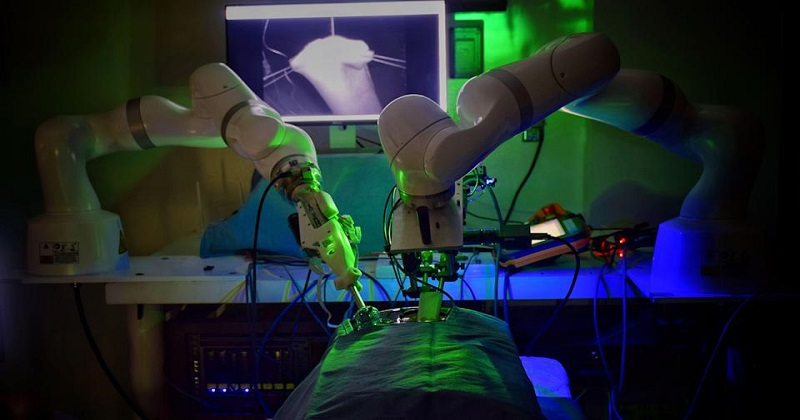
A robot has completed a small-incision, camera-guided surgical surgery on a soft tissue of pig, a step closer to completely automated procedures on people, according to researchers participating in the study.
Researchers from Johns Hopkins University in Baltimore reported how a specially constructed robot, dubbed STAR, was able to perform laparoscopic surgery without the need of humans in a study published Wednesday in the journal Science Robotics. According to the experts, this is the first time a robot has been able to complete a difficult surgery without the assistance of a person.
As per the American Society of Colon and Rectal Surgeons, laparoscopic surgery employs small incisions and camera equipment to conduct treatments in the abdomen, including those affecting the stomach, gall bladder, and intestines. Researchers stated that the robot executed an intestinal anastomosis, which entails joining two ends of an intestine — an operation that needs a high level of precision.
Also Read: 70-year-old ‘tunnel man’ from Karnataka, who turned barren land fertile, awarded Padma Shri
‘Our findings show that we can automate one of the most intricate and delicate tasks in surgery, [including] the reconnection of two ends of an intestine’, Axel Krieger, one of the researchers involved in the project said.
‘The STAR performed the procedure in four animals, and it produced significantly better results than humans performing the same procedure’, added Krieger, an assistant professor of mechanical engineering at Johns Hopkins’ Whiting School of Engineering.
Robotic technologies are being investigated by researchers all around the world to undertake complex surgeries that need repetitive motions and high degrees of precision, such as cardiac treatments. Experts said the technology would not necessarily replace human surgeons but would help and support them as required.
STAR, which stands for smart tissue autonomous robot, was designed by Krieger and his colleagues at Johns Hopkins and the Children’s National Hospital in Washington, D.C. to perform camera-guided soft tissue suturing.
According to the researchers, the newest version of the technology improves on a 2016 model that accurately mended a pig’s intestines but required a huge incision to access the gut and additional human direction. The new device feature specialised suturing instruments and cutting-edge imaging technologies, including a three-dimensional endoscope, or tube-like camera, that allows for more precise visualisations of the operative field. It also has a novel control system that, like a human surgeon, can change the surgical plan in real-time.

Post Your Comments